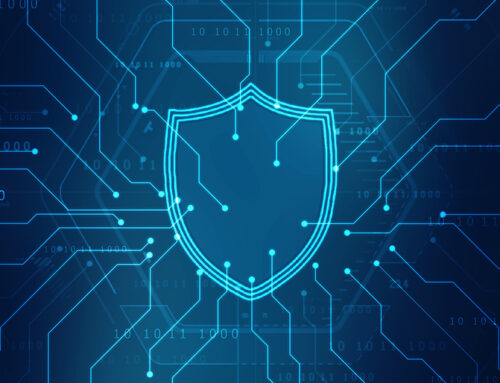Multi Factor Authentication (MFA): Is Your Sensitive Data Secure?
Perhaps you’ve noticed that an increasing number of your online accounts are asking you for more stuff when you login.
Whereas before it was just your username and password, now it’s those, plus a code sent to your email or phone. And when you call your bank, it may be even more complicated–they might try to verify your identity in three different ways before giving you access to your information.
That’s called Multi Factor Authentication (MFA), also sometimes called 2FA. And while the process may be annoying to the average consumer, it’s actually the best way for companies to keep customer information safe from cybercriminals. It’s also the best way for businesses to protect their own sensitive data safe from cyber attacks.
What is Multi Factor Authentication?
Multi Factor Authentication is a security enhancement that asks you to present more than one piece of evidence in order to access your account. These pieces of “evidence” are commonly referred to as “credentials.”
The kinds of credentials you might be asked to provide fall into three categories:
- Something you know (e.g., password)
- Something you have (e.g., account number)
- Something you are (e.g., facial-recognition)
The chances of a cybercriminal having one of these pieces of information is high. The chances of them having two? Not likely.
An MFA transaction double-checks with you (through a different avenue of communication) to make sure a login attempt is yours. According to a study conducted by Google, New York University, and UC San Diego, two-step verification involving an SMS code sent to a phone number stopped 76% of targeted attacks, 96% of bulk phishing attacks, and 100% of automated bots.
The MFA Process
While one MFA transaction might look a little different from the next, the process is essentially the same. Our partners at DUO outline the MFA process as:
- The user logs in to a website or service with their username and password.
- The password is validated by an authentication server, and if correct, the user becomes eligible for the second factor.
- The authentication server sends a unique code to the user’s second-factor device.
- The user confirms their identity by approving the additional authentication from their second-factor device.
With MFA, a hacker might be able to slither their way into a system using force or social engineering strategies. But the authorized user will be alerted immediately if a sign-in is attempted. If the threat is legitimate, your IT company or cybersecurity company will take it from there.
As the security experts at DUO aptly put it, we’re “moving away from the Captain America approach–using one shield for self-defense: a password–to the Batman approach, where a utility belt of tools contains options for a variety of situations.”
MFA is one of the first lines of defense against cybercriminals who attempt to steal your information. Some organizations will automatically require it, while others offer it as an option. Consider the recent rise in cyber attacks and data breaches–if your personal information has been compromised, it’s even more important for you to set up MFA for as many accounts as you can.
When Should a Business Use Multi Factor Authentication?
According to the Ponemon Institute’s Cost of a Data Breach Report, the average cost of worldwide data breaches in 2020 was $3.86 million. So, the answer to the above question is: always.
4 Benefits of Multi Factor Authentication For Businesses:
- Added security to company logins. The main purpose of using MFA within an organization is to protect sensitive data from unauthorized access. This includes customer information and business banking information. MFA will also protect your employees’ accounts and neutralize any threat of employee negligence when it comes to their passwords.
- Simple, cost-effective cybersecurity measure. MFA is unintrusive, only adds a few more seconds to the login process, and costs a fraction of what you would pay if your company experienced a data breach. (Recall the startling number we mentioned earlier.) We recommend reaching out to a trusted IT company and asking for a MFA installation quote.
- Increases Cybersecurity team’s effectiveness. Want to know the best way to bottleneck your Cybersecurity team’s workflow? Overload them with constant login threats. MFA will eliminate the majority of these threats, so your Cybersecurity team can focus on monitoring and observing traffic for higher-level security issues.
- Insurance eligibility. This is a big one. With the ballooning cost of cyber attacks, most cyber liability insurance carriers now require that companies use MFA for computer logins and email accounts in order to receive coverage. Companies that don’t implement MFA will either pay higher premiums or be denied coverage. Essentially, if you want to protect company money, you’re going to need to invest in protecting your business’s banking information, first.
How Does AvarTec Support Businesses With Multi Factor Authentication?
AvarTec has a vast amount of experience in the installation, configuration, and support of the leading Multi Factor Authentication product, DUO. Together, AvarTec and DUO will help safeguard your business’s sensitive information and data.
As an IT company, AvarTec also offers parallel cybersecurity services that align with and bolster the protection benefits of MFA. We have a 24/7 monitoring system that will keep your company safe from cyber attacks at all times. Our state of the art cybersecurity services include defenses against malware attacks, phishing, virus threats and more.
Make Sure Your Business is Protected With AvarTec!
Are you ready to get serious about your company’s cybersecurity? AvarTec has the cybersecurity services and IT solutions that you need to protect your business’s data and your wallet. Contact us today and ask about MFA installation and our partnership with DUO. We look forward to helping you secure your business!


